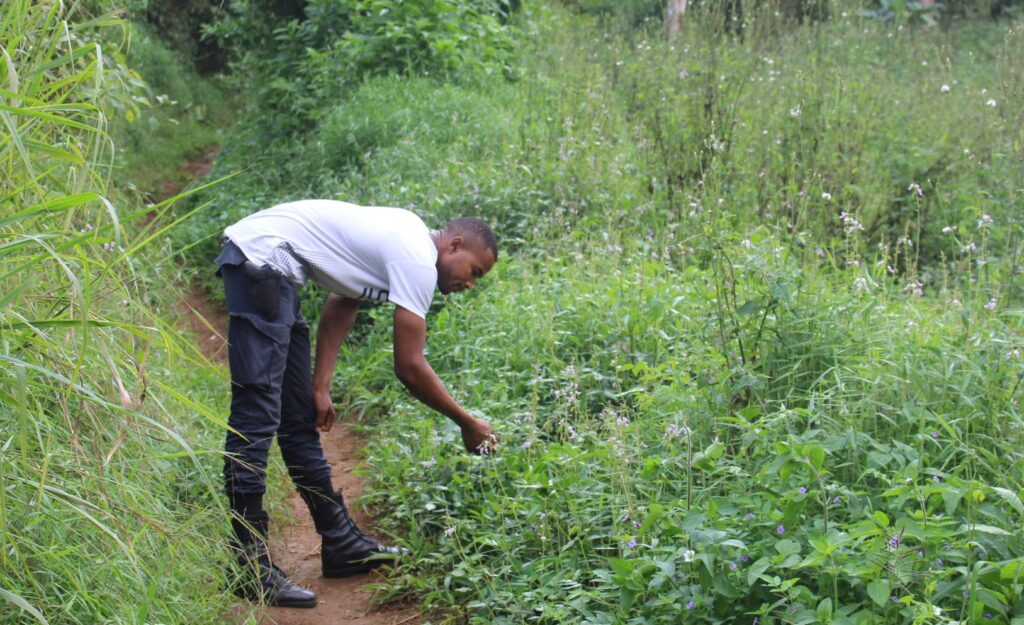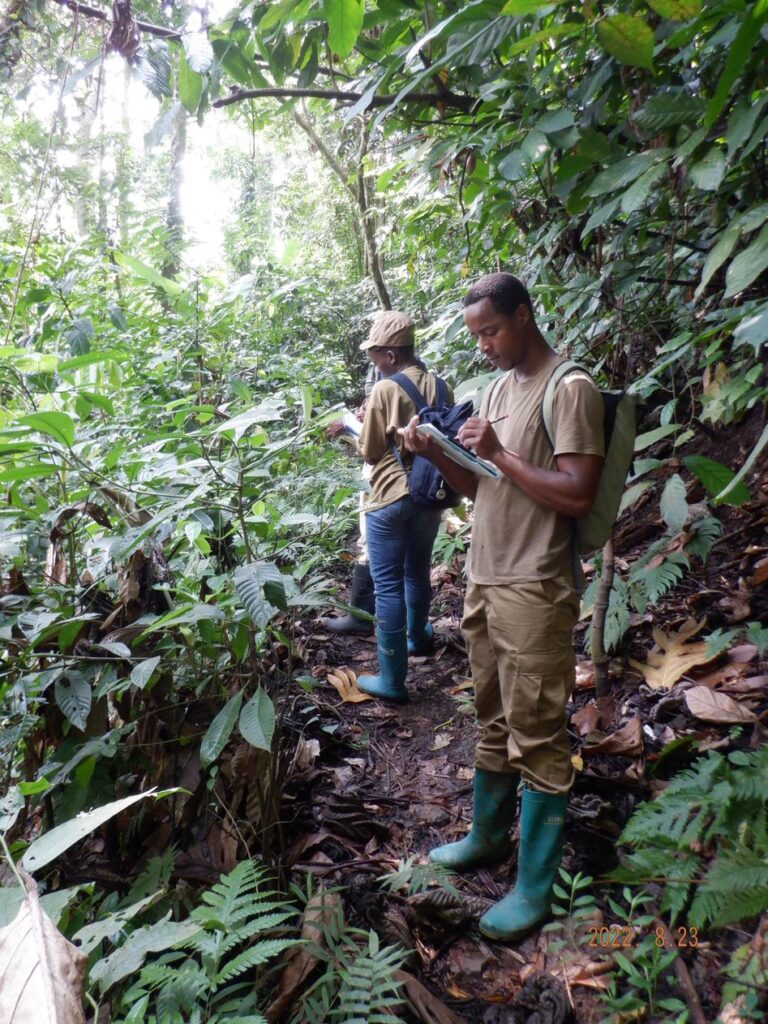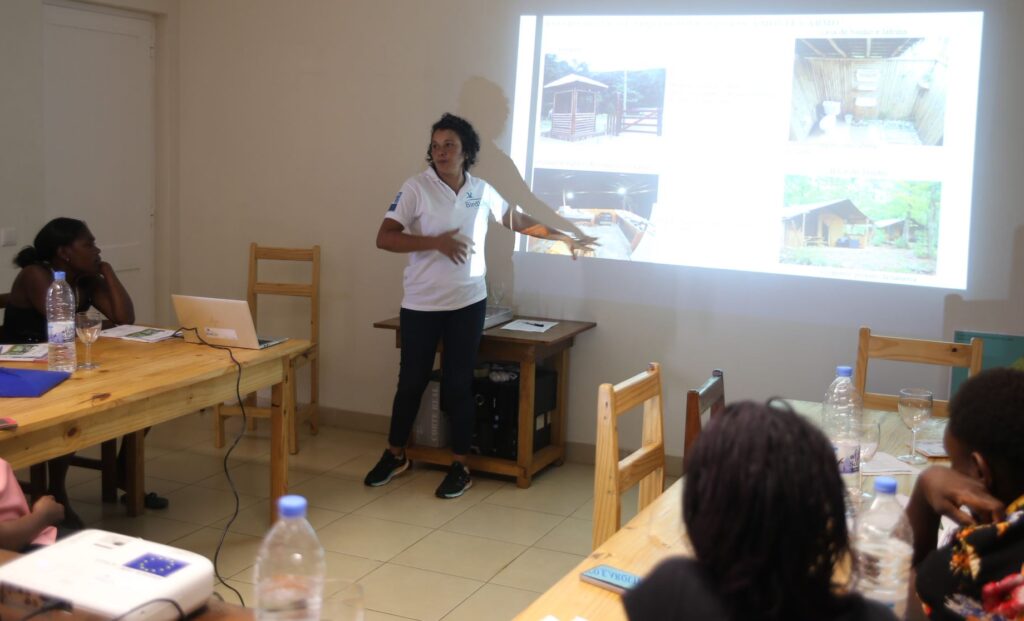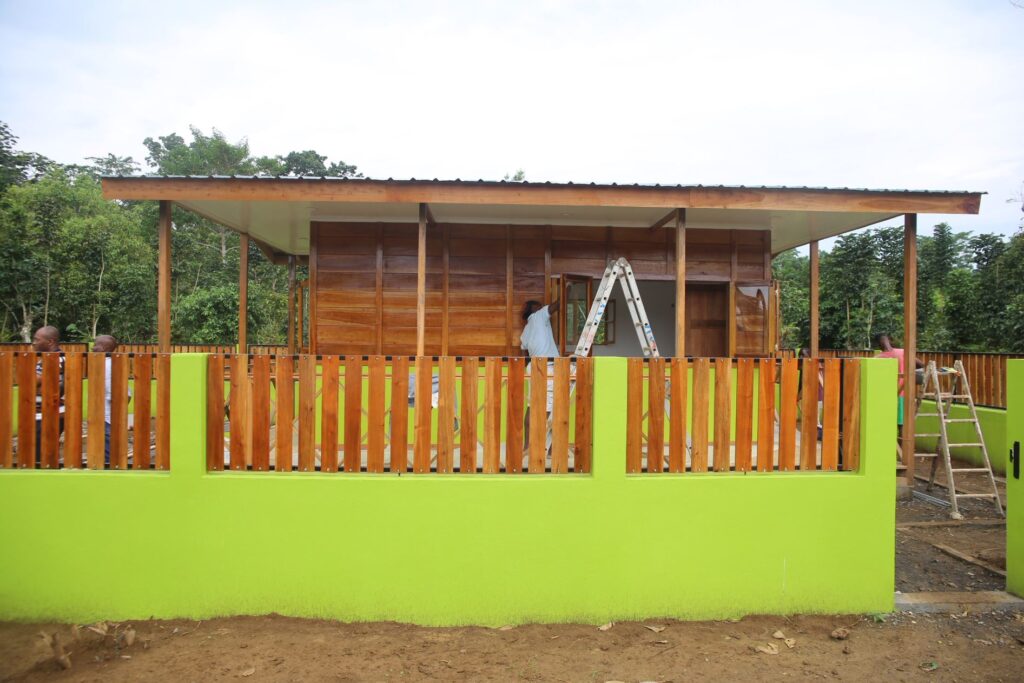Advancing Forest Conservation in São Tomé and Príncipe

In São Tomé and Príncipe (STP), BirdLife International is working with local communities and national authorities to advance forest conservation.
By Vânia Trovoada and Conceição Neves
São Tomé and Príncipe (STP) is a country with various shades of green, with 86% of the islands’ territory covered by forests. On the island of São Tomé, one third of the territory is covered by mostly primary forests, an exceptional natural habitat for various species of fauna and flora that present a very high level of endemism. More than 33% of the country’s population depend directly on these areas for livelihoods, further underlining their importance.

To safeguard this natural heritage, Law Nr. 06/2006 was created to protect these habitats, which include the forest ecosystems of the centre of the island, the mangrove of Malanza (the largest mangrove in the country) and the savannah area of Praia das Conchas and Lagoa Azul. With this background, BirdLife International is collaborating with government institutions, civil society, and the private sector in several conservation actions, based on objectives defined in the Strategic Plan for STP for 2021-2030.
“We believe that changing mindsets is a long-term process and is only possible when all parties are united to achieve a common goal. To this end, we have implemented various actions, involving and empowering stakeholders, to maintain or improve the conservation of STP’s natural heritage”, notes Abigail Varela, BirdLife International’s Conservation Officer for the Island of São Tomé.
Among these actions, the monitoring of biodiversity and threats in the Parks and their buffer zones, is a priority for improving conservation action and management of key biodiversity areas, particularly these primary forests. Consequently, the Biodiversity and Threats Monitoring Protocol was developed, validated, and implemented since 2021, with participation from the Directorate of Forests and Biodiversity of STP (DFB), the Directorate of Obô Natural Park of São Tomé (PNOST), the CE3C (Centre for Ecology, Evolution and Environmental Change) and SPEA (Portuguese Society for the Study of Birds) who is BirdLife’s partner in Portugal.
Monitoring activities are carried out biannually (February and August), by agents of the DFB and representatives of civil society, such as the Monte Pico Association and PTRS (Platform for Responsible and Sustainable Tourism), with the support of BirdLife in STP. The collected data is compiled in a database, from which the key biodiversity indicators foreseen in the monitoring protocol are evaluated, and through which, updates are provided on the state of the tree community, abundance of forest birds and human activity.
“Monitoring is extremely important, because in addition to providing information on the state of biodiversity conservation, it helps us understand the changes that occur in the natural habitat of different species, including the threats associated with them”, notes Edmilson da Trindade, Technician from the PTRS, and former Obô Guardian.

“We believe that changing mindsets is a long-term process and is only possible when all parties are united to achieve a common goal. To this end, we have implemented various actions, involving and empowering stakeholders, to maintain or improve the conservation of STP’s natural heritage”.
Abigail Varela, BirdLife International’s Conservation Officer for the Island of São Tomé.

Another equally important action is the support of BirdLife to government institutions, in improving the management of protected areas, which includes the rehabilitation and maintenance of key infrastructures. A key success has been the rehabilitation of the Bom Sucesso Botanical Garden, which is the headquarters of PNOST, including with the maintenance of the botanical collection, rehabilitation, and painting of the physical infrastructure, as well as installation of a solar energy system.
Further, the PNOST trails are now regularly maintained with proper signage and information panels with rules of good practices for its visitors in addition to construction of control and surveillance posts at strategic points identified on the two islands, to put an end to the growing wave of thefts from agricultural land plots, as well as monitor and control the illegal logging in the Parks and the buffer zones. Material including field equipment for DFB agents, UPAB (Unit for the Protection of Environment and Biodiversity of the National Police), PNOST, Príncipe Natural Park (PNP), Platform for Responsible and Sustainable Tourism (PTRS), have been availed in addition to sharing expenses for supervision, as part of capacity building efforts.
The monitoring teams continue to receive training on various aspects including protected areas, sustainable financing mechanisms, biodiversity and endemism of São Tomé and Príncipe, environmental laws in force, as well as communication and awareness techniques.
Since the beginning of 2022, more than 50 training sessions have been held, targeting different recipients, whether institutional technicians, the civil society, or the private sector. The most recent training was held in February 2023 within the scope of the project entitled “Build capacity and capability to regulate hunting and protect biodiversity” funded by the Darwin Initiative, where more than 30 hunters and former hunters, community representatives and technicians from different state departments were trained on the importance of hunting regulation in the protection of endemic species.
“The training was good because it opened the minds of many when it comes to the management of hunting in São Tomé. On the other hand, we know in advance that awareness is a tool that is used to help change mentality and consequently change behaviour about the practice of hunting in São Tomé”, said Rute da Cruz, technician from the Directorate of Forests and Biodiversity of STP, who took part in the training.

“The training was good because it opened the minds of many when it comes to the management of hunting in São Tomé. On the other hand, we know in advance that awareness is a tool that is used to help change mentality and consequently change behaviour about the practice of hunting in São Tomé”
Rute da Cruz, technician from the Directorate of Forests and Biodiversity of STP

In addition, employees of the Socfin Agripalma (an agro-industrial palm oil production company), benefited from a training package, with the theme “Biodiversity of São Tomé and Príncipe and its conservation”, within the scope of the RSPO certification (Roundtable on Sustainable Palm Oil), which is a compensation process in sustainable production of palm oil.
“BirdLife has been working to improve the impact of these actions on the protected areas and the people that depend on them, by maintaining support to local institutions and strengthening synergies to create new avenues to sustainably conserve STP’s forests.”, concludes Agostinho Fernandes, Head of Project Office for BirdLife International in São Tomé and Príncipe.